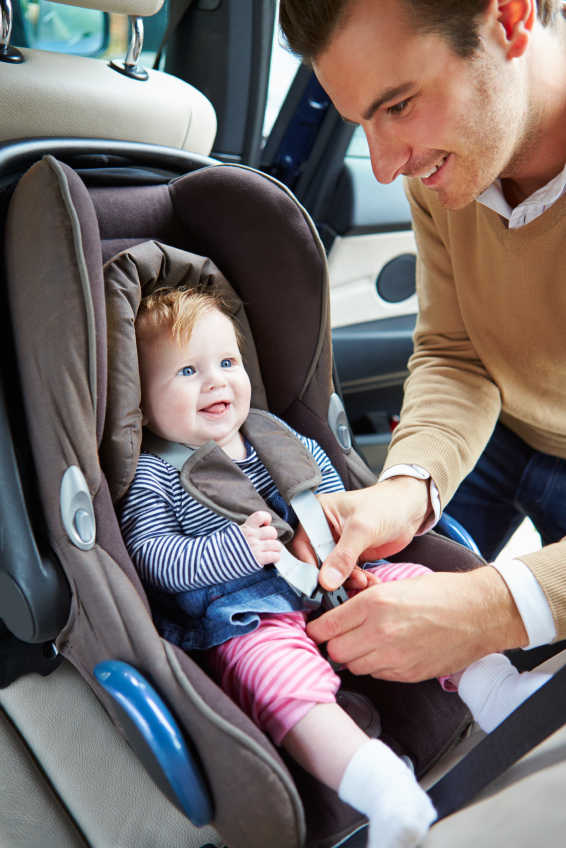It’s not uncommon for parents to make a handful of mistakes when it comes to car seats and car seat installation. As a parent, you may not even realize you are making these mistakes. To help, here are the top car seat mistakes parents make:
1. Moving Your Child Out of a Booster Seat Too Soon: The seatbelt is designed to fit adults, not children. Improper seat belt fit can result in abdominal or neck injury in a crash or sudden stop. Keep your children in booster seats until the seat belt fits them properly. Depending on your child’s growth and development, a seat belt typically fits correctly between ages 8-12.
2. Not Installing the Car Seat Tightly Enough: If the seat belt or lower anchor connection is too loose, the car seat will not stay put, which could lead to serious injuries in the result of a crash. The car seat should not move side-to-side or front-to-back more than 1 inch tested at the belt path.
3. Harness Straps Too Lose: If harnesses are too loose, your child will not be properly restrained in the event of a crash. Straps should lay flat and not have any twists. Be sure the harness is snug enough that you cannot pinch any extra material at the child’s shoulder.
4. Retainer Clip (Chest Clip) is Too Low: The retainer clip helps keep the child secure in the car seat in the event of a crash. When a retainer clip is too low, a child can come out of the harness, or the plastic retainer clip can cause internal damage to their abdomen. Place the retainer clip at armpit level.
5. Turning Your Child Forward-Facing Too Soon: At age 2, children are 5 times less likely to die or be seriously injured in a crash if they ride rear-facing in their car seat. Turning your child forward-facing before age two can result in head, neck or spinal injuries due to their underdeveloped bodies. A child should remain in a rear-facing position as long as possible, until they are able to reach the upper weight or height limit allowed by the car seat manufacturer.
6. Allowing a Child under the Age of 13 Ride in the Front Seat: Children under 13 should always ride in the backseat, as they are not large enough to safely ride in the front seat, where the impact of the air bag can seriously injure them in the event of a crash.
7. Forgetting the Top Tether: Without the top tether, your child’s head and neck will be subject to excessive forward movement in a crash or sudden stop. Always use the top tether with both LATCH or seat belt installations.
8. Adding Additional Padding, Toys or Mirrors to Your Child’s Car Seat: Using these products could interfere with the design of the car seat and in the event of a crash, could get in the way of the car seats functioning. Toys and small objects can also become a dangerous projectile in a sudden stop or crash. Only use products that come with the seat or are recommended by the seat manufacturer.
9. Installing a Car Seat Using LATCH in the Center Rear Seat of a Vehicle: Most vehicles do not support LATCH installations in the center rear seat. Using lower anchors intended for outboard seats could cause the system to fail and the car seat to be thrown in a crash. Always read your vehicle owner’s manual and only use lower anchors in seating positions that are approved by the vehicle manufacturer.
10. Transporting Unsecured, Heavy Items, Including Pets: Loose items in the vehicle can become dangerous projectiles and can seriously injure passengers. Secure items in the trunk, glove compartment or storage location. Properly restrain pets with approved seat belts.
11. Installing a Car Seat Using Both LATCH and a Seat Belt: Installing a car seat with more than one system can put unnecessary stress on the car seat and affect its performance in the event of a crash. Install the car seat in approved seating positions with LATCH or the seat belt, never both.
12. Wearing Bulky Coats/Sweaters While Buckled to the Seat: Unapproved padding placed behind of under the harness can compress in a crash, creating slack in the harness. Place blankets and jackets over the child after the harness his snug and secure.
Source: SafeSeats4Kids by AAA

